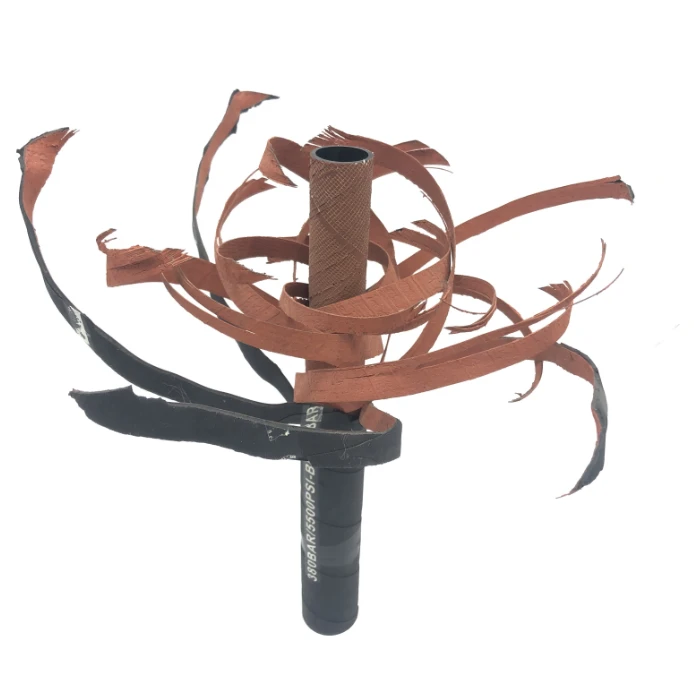335345435
Oct . 09, 2024 10:14 Back to list
din hydraulic hose fittings
Understanding DIN Hydraulic Hose Fittings Key Features and Applications
Hydraulic systems play a critical role in various industries, providing the necessary power for machinery and equipment. A crucial component of these systems is the hydraulic hose fittings, and among the various standards available, the Deutsches Institut für Normung (DIN) fittings are widely recognized for their reliability and performance. This article delves into the characteristics, types, and applications of DIN hydraulic hose fittings, emphasizing their importance in hydraulic systems.
What are DIN Hydraulic Hose Fittings?
DIN hydraulic hose fittings are standardized components designed to connect hydraulic hoses to other parts of a hydraulic system, such as pumps, valves, and cylinders. The DIN standard, established by the German Institute for Standardization, ensures that these fittings provide a reliable, leak-proof connection under high pressure and varying temperatures. The primary purpose of these fittings is to facilitate the transmission of hydraulic fluid, which is essential for generating power in hydraulic machinery.
Key Features of DIN Hydraulic Hose Fittings
1. Standardization One of the main advantages of DIN fittings is that they are produced according to standardized specifications. This standardization ensures compatibility between different manufacturers’ products, facilitating easy assembly and maintenance of hydraulic systems.
2. Material Quality Typically, DIN hydraulic fittings are manufactured from high-quality materials such as steel, stainless steel, or brass. These materials are chosen for their resistance to corrosion, wear, and high pressure, ensuring that the fittings can withstand demanding operational conditions.
3. Variety of Designs DIN fittings come in various designs, including but not limited to, straight, angled, and T-shaped configurations. This variety allows for flexibility in design and installation, enabling engineers to create efficient and effective hydraulic circuits tailored to their specific needs.
4. Multiple Sizes and Grades DIN hydraulic fittings are available in numerous sizes and pressure ratings, accommodating a wide range of hydraulic systems. This variety ensures that there is a suitable fitting for every application, from low-pressure operations to those requiring high durability under extreme conditions.
Common Types of DIN Hydraulic Hose Fittings
There are several common types of DIN hydraulic hose fittings, each serving distinct purposes within hydraulic systems
din hydraulic hose fittings

- DIN 2353 This is a popular type of fitting used in high-pressure applications
. It features a cone-shaped sealing design that prevents leaks and ensures a secure connection.- DIN 24° Cone Fittings These fittings are designed with a 24-degree tapered angle that aids in creating a tight seal. They are widely used in various hydraulic circuits due to their effectiveness.
- DIN 14800 These fittings specialize in multi-layer hoses, providing enhanced flexibility and strength. They are often found in mobile machinery and automotive applications.
Applications of DIN Hydraulic Hose Fittings
DIN hydraulic fittings are utilized across multiple industries, demonstrating their versatility and effectiveness
- Automotive In automotive applications, DIN fittings are used for power steering systems, brake lines, and other hydraulic components requiring a secure and reliable connection.
- Construction and Agriculture Heavy machinery in construction and agricultural settings heavily relies on hydraulic systems for efficient operation. DIN fittings ensure these systems function reliably under tough working conditions.
- Manufacturing Industrial machinery, including presses and lifts, utilizes DIN hydraulic fittings to ensure robust and dependable hydraulic controls, essential for operational efficiency.
Conclusion
In summary, DIN hydraulic hose fittings are integral to many hydraulic systems used in diverse industries. Their robust design, standardization, and compatibility make them a go-to choice for engineers and professionals seeking reliability in hydraulic applications. Understanding their features, types, and applications can significantly enhance the efficiency and safety of hydraulic operations, providing users with the confidence needed to harness the power of hydraulics effectively.
-
SAE 100 R17 Black Smooth Cover Hydraulic Hose
NewsMar.07,2025
-
SAE 100 R17 Black Smooth Cover Hydraulic Hose
NewsMar.07,2025
-
SAE 100 R17 Black Smooth Cover Hydraulic Hose
NewsMar.07,2025
-
SAE 100 R17 Black Smooth Cover Hydraulic Hose
NewsMar.07,2025
-
SAE 100 R17 Black Smooth Cover Hydraulic Hose
NewsMar.07,2025
-
steel wire braided hydraulic hose
NewsMar.07,2025



